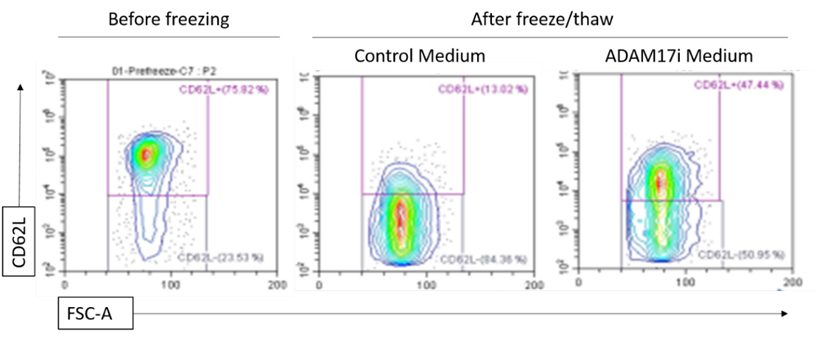Immune cells display a range of phenotypes (eg. regulatory, memory, or activated) that are regulated by and regulate the assortment of proteins expressed on their surface. Unfortunately, freezing and thawing of immune cells causes loss of important surface proteins. In the case of cell therapies (like T cell or NK cell), loss of surface proteins from freezing during the manufacturing process can impair their efficacy. Immune cells are also frozen in the process of diagnosing their phenotype, in which case loss of surface proteins leads to an incorrect diagnosis.
The inventors discovered that the protease ADAM17 is responsible for removal of key receptors (including CD16 and CD62L) during the freeze/thaw process. They found that addition of ADAM17 inhibitor to freezing medium prevents loss of the receptors. Utilizing this medium will result in improved ability to cryopreserve cell therapies with desired phenotypes. The medium will also provide means for more accurate diagnosis of a patient’s immune cell phenotypes.

Figure: Freezing medium containing ADAM17 inhibitor retains high CD62L expression on T cells that was present prior to freezing, while expression is lost when using standard freezing medium.
Applications:
- Improving immunotherapy treatment efficacy for cancer and HIV
- Improving accuracy of diagnostics of immune cell phenotypes
Advantages:
- Prevents loss of critical surface receptors from cell freezing process
- Maintains desired phenotype of preserved T cells or NK cells